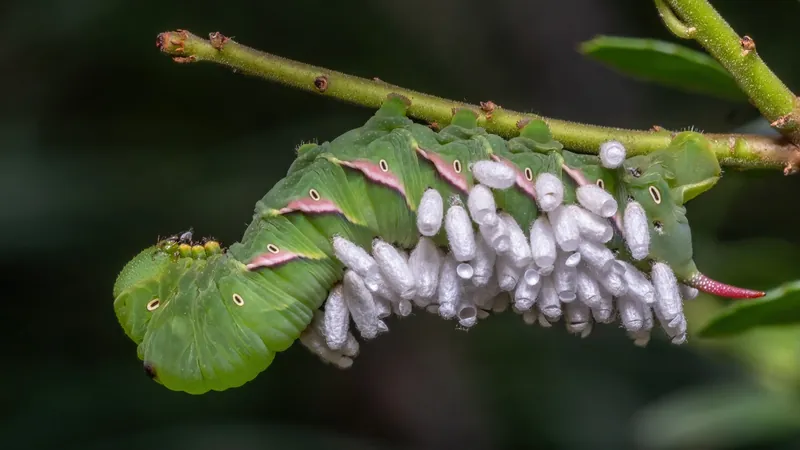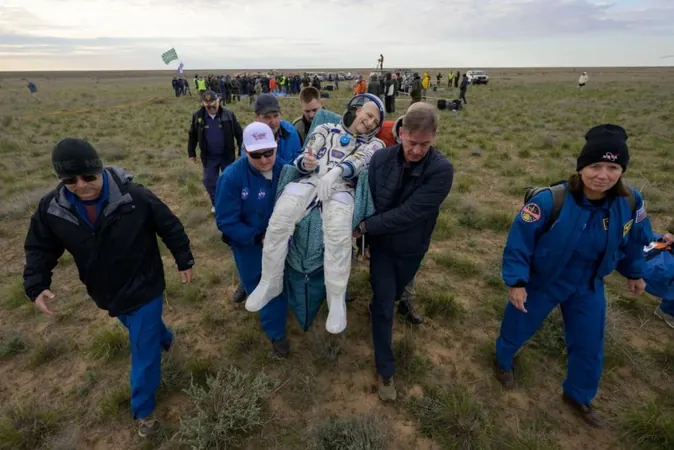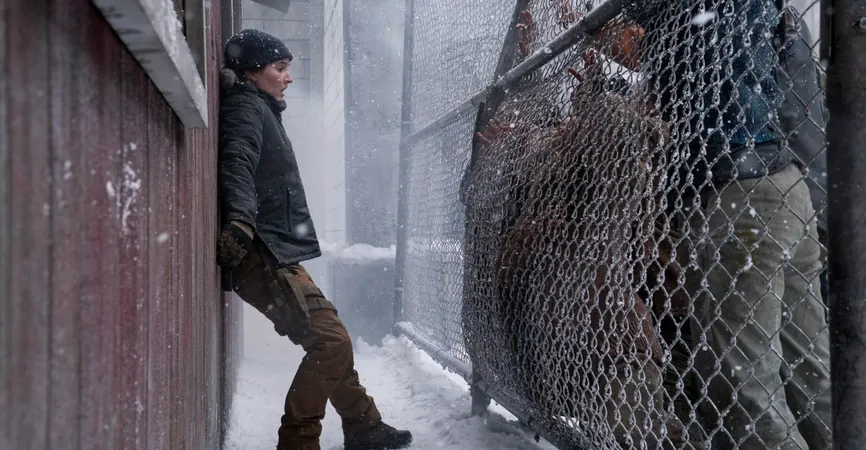
Unveiling the Creepy World of Insect Zombies: Mind-Controlled by Parasites!
2025-04-15
Author: Jacques
The Chilling Reality of Insect Zombification
Right now, in your own backyard, wasp larvae could be feasting on a caterpillar from the inside out. These insidious creatures chew through the caterpillar's exoskeleton and create cocoons directly on its back, transforming it into a living host for their growth.
This gruesome scenario is more prevalent than you might imagine! Some of nature's most terrifying parasites turn their hosts—be it ants, beetles, or caterpillars—into mindless puppets that follow their every command.
Discover the Sinister Secrets of Zombie Bugs
In her eye-opening book, "Rise of the Zombie Bugs," science writer and media producer Mindy Weisberger reveals the chilling tactics used by these parasites to exert mind control over other creatures. Through her gripping narratives, Weisberger exposes a hidden world where zombie-like insects roam around us.
The Inspiration Behind the Book
In an exclusive interview with Live Science, Weisberger shares her motivation for diving into the eerie world of parasitic mind control. "They’re simply fascinating! The idea of autonomy and free will being twisted by an external force is profoundly unsettling," she explains.
The Horrifying Caterpillar Scenario
Among the most unsettling examples Weisberger encountered involves caterpillars targeted by Ichneumonid and Braconid wasps. These wasps lay eggs inside the caterpillars, sometimes overwhelming them with dozens of larvae. As the larvae mature, they chew through the caterpillar's skin and spin their cocoons on its back, all while the caterpillar remains helpless.
Even Charles Darwin was horrified by this mind-numbing reality, stating it made him question the existence of a benevolent God. So the next time you see a caterpillar, remember: You might be witnessing a tragedy in the making.
The Jewel Wasp: An Insect's Nightmare
One of Weisberger’s favorites is the jewel wasp, which has a particularly gruesome approach to its host, the cockroach. This wasp delivers a targeted sting to the cockroach's brain, making it docile enough to follow the wasp back to its burrow, where the wasp lays its eggs and the innocent roach becomes food for the young wasps.
The Evolution of Parasite Manipulation
The eerie relationship between these parasites and their hosts is not new. Some go back millions of years, such as the infamous zombie-ant fungus that compels ants to leave their colonies and die in positions that best serve the fungus’s reproductive needs. Fossils dating back 48 million years offer a glimpse into this dark evolutionary past.
Scientists hypothesize that these manipulative behaviors evolved as the fungi adapted to their hosts' social structures, increasing their chances of survival.
Studying the Complex Dance of Nature’s Manipulators
Investigating how these parasites alter behavior is incredibly complicated. For instance, the upcoming emergence of periodical cicadas offers a unique challenge for researchers studying the fungus Massospora cicadina, which makes cicadas hyper-sexualized, leading them to unwittingly spread the fungus as they engage in mating.
Parasites and Human Behavior
While most examples are found in insects, some parasites like Toxoplasma gondii can affect mammals, including humans. This parasite, which thrives in cats, alters rodent behavior, reducing their natural aversion to feline scents—a tactic meant to increase their chances of being eaten by cats and completing the parasite's lifecycle.
Why No Zombie Bug Apocalypse? A Delicate Balance
While parasitic relationships can be gruesome, they exist within balanced ecosystems, preventing a total takeover of 'zombie bugs.' Nature's intricate web ensures that parasites cannot thrive unchecked, as their survival depends on a plethora of host interactions.
Future Projects: A Younger Audience
Looking forward, Weisberger plans to adapt her thrilling research into a version for younger readers, inspired by the enthusiastic questions posed by her niece.
With her captivating insights, Weisberger invites us to peer into a world where nature’s horror shows unfold right before our eyes—and we had no idea.









 Brasil (PT)
Brasil (PT)
 Canada (EN)
Canada (EN)
 Chile (ES)
Chile (ES)
 Česko (CS)
Česko (CS)
 대한민국 (KO)
대한민국 (KO)
 España (ES)
España (ES)
 France (FR)
France (FR)
 Hong Kong (EN)
Hong Kong (EN)
 Italia (IT)
Italia (IT)
 日本 (JA)
日本 (JA)
 Magyarország (HU)
Magyarország (HU)
 Norge (NO)
Norge (NO)
 Polska (PL)
Polska (PL)
 Schweiz (DE)
Schweiz (DE)
 Singapore (EN)
Singapore (EN)
 Sverige (SV)
Sverige (SV)
 Suomi (FI)
Suomi (FI)
 Türkiye (TR)
Türkiye (TR)
 الإمارات العربية المتحدة (AR)
الإمارات العربية المتحدة (AR)